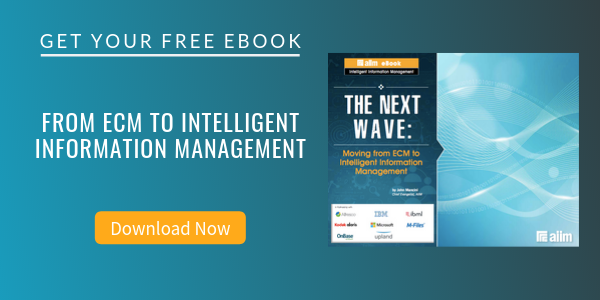
Gap Analysis: Finding the Weak Links in Your ECM Ecosystem
Enterprise Content Management (ECM)
Gap Assessments (or Gap Analysis) are tools well known and used by Consultants but generally are not well known by organizations. Would an ECM Gap Assessment benefit your organization?
I talked to Jane, the Records and Content Management Director of an organization, which I’ll call ‘Company A.’ Company A is trying to transition employees from paper-based to electronic-based information practices. Here’s Jane’s story:
I want my organization to go to the 'next level' of information management, where all employees can realize benefits that will improve their overall productivity and enable them to work smarter.
We have 2 to 3 ECM and Records management systems in place. We also use shared drives, but they aren’t very useful.
Our policies, procedures, and retention schedules for controlling records are in place. We follow some records management practices, including locking down our records. We have implemented metadata, taxonomy, and access control in our records management system.
But employees keep bypassing the ECM systems and put information in the shared drives. They don’t organize information (it’s a real mess), and generally, we can’t find content.
The vendors who implemented the ECM system are long gone, and we haven’t had any training for years. We’ve tried using portals, and people like them but don’t use them.
My team spends a lot of time ‘stewarding’ employees, but we’re exerting more energy for the results we’re getting in return.
How do I get participation from employees, specifically staff, managers, and directors, to store, organize, and manage information in a way that will benefit the organization as a whole? How do I unwed employees from ‘paper-based practices’? How do I get people to change their ways to be more efficient?
We should be working more efficiently and benefiting from these systems and more easily finding information!
What is the crux of Company A’s ECM problems? Jane thinks it is training and education. If the CIO, COO, CFO, or manager of the manufacturing division were asked, what might they say is at the root of the problem? The point is, each person would probably have a different answer.
Would educational workshops help? Perhaps, but maybe not. First, Company A needs to define its weak links.
For all of us, our daily focus is at the "grind stone-level" below the "tree line" that inhibits our view of the forest. In addition, we often opt for quick, reactive solutions because we need results "yesterday." Unfortunately, this is not a good recipe for understanding ambiguous weak links—those that aren’t obvious, like the issues Jane described—in an ECM ecosystem. Root causes will emerge but only from careful collection and analysis of quality data.
Your organization’s ECM ecosystem is a lot like a city: It is a complex multi-dimensional system. Knowing its strengths, weaknesses, and gaps requires viewing it like an architect (think city-planner architect). An ECM gap assessment is an architect and planner’s tool that describes your ECM ecosystem—both the whole and its parts. It describes current state and maturity, strengths, weak links, critical gaps (just to identify a few) that may be keeping it from maturing at the desired pace.
A good gap assessment requires thoughtful planning, quality data collection, and analysis in order to accurately describe your ECM ecosystem current state of maturity. Fully seeing your ECM ecosystem for what it is is the first step toward managing its progression.
A Gap Assessment does the following:
- Clarifies your ECM ecosystem--usually against best practices
- Shows an integrated ‘picture’ of your ecosystem
- Provides different perspectives from people
- Exposes strengths, weaknesses and gaps
- Provides a common ‘mental model’ to get buy-in
- Provides direction to solve the ‘right’ issue(s)
- Provides a baseline for future assessments
About Alix Kneifel
Alix Kneifel is a Strategic Program, Product, and Project Director Professional with 20+ years of experience overseeing and managing a startup, formulating the information management program launch and growth initiatives at NASA JPL, and managing consulting engagements—spanning corporate, government, and startups—to improve functional area, product and technical solutions. Recognized ability to build concepts, frameworks and tangible approaches, redesigning strategies to innovate products and programs, drive impactful solutions, and deliver measurable results.



